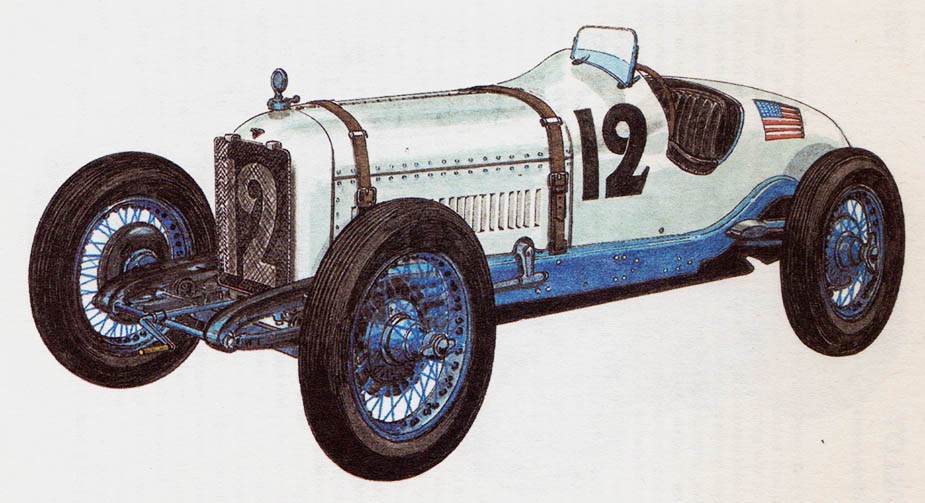DUESENBERG – year 1921
Duesenberg Motor Co., Indianapolis, Indiana, USA.
The first post-war ACF Grand Prix race at Le Mans was dominated by the Ballot and Duesenberg cars. Among the new entrants, the company STD should be mentioned, which consisted of Sunbeam companies, Talbot i Darracq. The track at Le Mans had 17,26 km long, so it had to be done 30 laps, to travel the route 518 km. The winner was American Jimmy Murphy driving a Duesenberg car at an average speed 125,6 km/h. It was the first victory of an American rider and an American car at a European Grand Prix race. Four starting Duesenbergs came to Europe with new technical solutions, thanks to which they deserved a prominent place in the history of cars. Battery ignition and hydraulic brakes appeared in the car for the first time.

Duesenberg Motor Co., Indianapolis, Indiana, USA.
The winning Duesenberg was equipped with an eight-cylinder engine with a cylinder diameter 63,5 mm and piston stroke 117 mm. A camshaft in the cylinder head made it possible to achieve 5000 RPM. Maximum power was already achieved at 4250 RPM. The cylinders had replaceable heads, with three valves each: two inlet for efficient charging and one for exhaust, placed at an angle of 60 ° to the others. The chromium-nickel steel crankshaft was mounted in two slide bearings and one roller bearing. The engine was powered by two Miller carburettors. The battery ignition with a high-voltage coil was provided by the well-known American company Delaware Electric & Light Company (DELCO). A multi-disc clutch and a three-speed gearbox formed one block with the engine. A flat steel frame supported rigid bridges with semi-elliptical leaf springs. The levered friction dampers dampened the vibrations. Unlike European cars, the exhaust pipe was located on the right side of the body, and the driver sat on the left side. Duesenberg had a lot 1150 kg and reached the top speed 160 km/h.